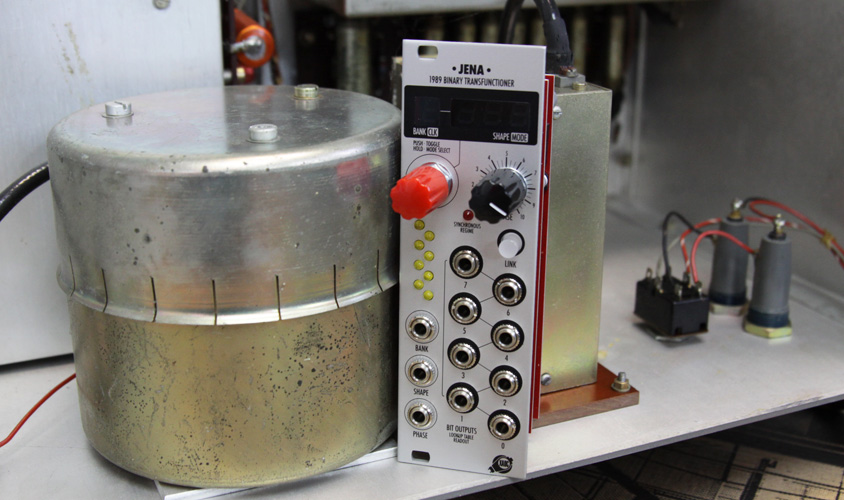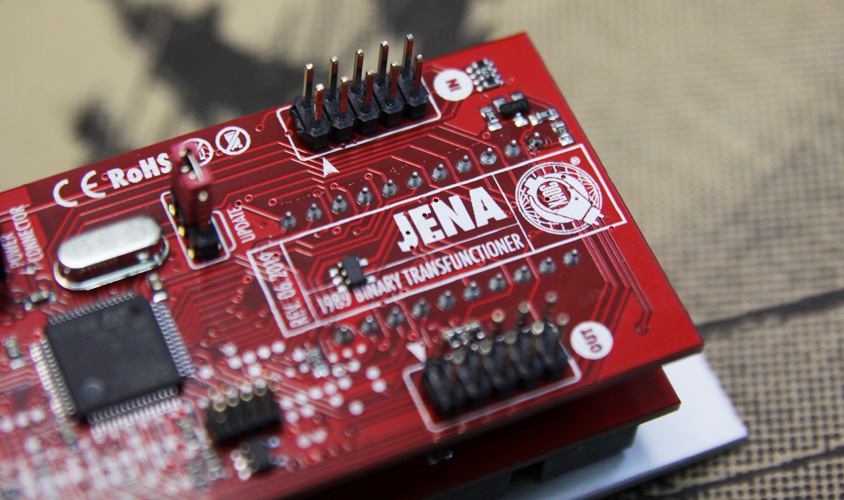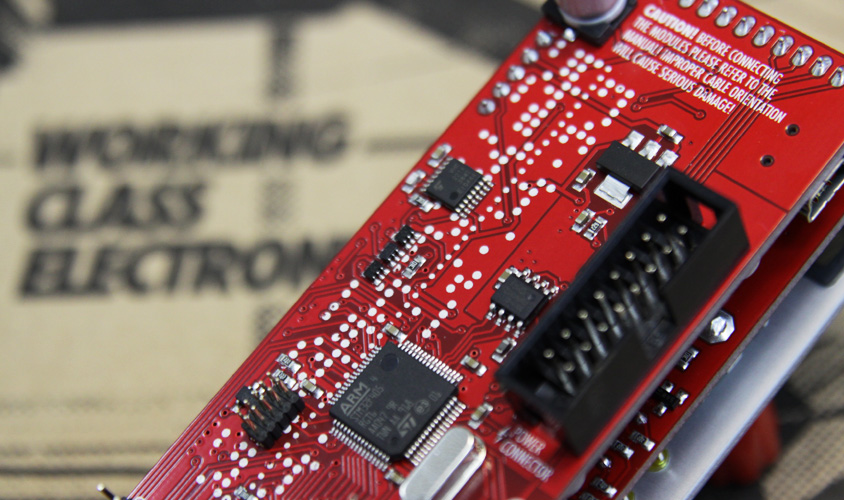Jena
Jena
Binary Transfunctioner
Model of 1989
Description
Jena is a digital module that may be used as a flexible waveshaper for CV and audio signals, a wavetable oscillator, a Walsh function generator, or a rhythm generator. Jena is a new member of the Leibniz Binary Subsystem which operates on signals and voltages by manipulating binary 8-bit numbers. The Leibniz subsystem offers direct access to all individual bits of data which can be mixed and cross-patched (like in the popular circuit bending experimental technique, but without the risk of damaging your device). Please note that for analog inputs and outputs it needs to be paired with other Leibniz modules, such as Drezno. Complex chains will be possible as more components are added to the system. For example, you can use two Lipsk expanders (one before Jena, and another one after Jena in the chain) for unlimited patching. For detailed description, please refer to the manual.
Features
- Component of Leibniz Binary Subsystem
- 15 banks of 256 digital transform functions
- Digital waveshaper
- Wavetable oscillator
- Through-zero linear phase modulation
- Walsh function generator
- Drum pattern generator
Technical details
- 8hp, skiff friendly
- Current draw: +95mA / -30mA
- Reverse power protection
Expandability
Drezno is the input/output front-end of the system, consisting of an analog–to–digital converter (ADC) and a digital–to–analog converter (DAC), that alone can be used for manipulating analog signals and voltages based on their binary representation.
Lipsk is a binary logic processing expander module that can flip (invert) individual bits of the digital signal representation. There are more Leibniz Binary Subsystem elements coming, with specialized and advanced sets of features.
Poczdam is a binary data routing solution for the Xaoc Leibniz Subsystem. It facilitates manual and remote switching between two Leibniz data sources.
Erfurt is a bi-directional digital counter, frequency divider. It has multiple applications: the output of the counter may be used as a phase source driving a digital wavetable, connected to other Leibniz modules it may scan waveshapes in Jena, produce stepped voltages useful for making interesting glissandi with Drezno and any VCO, generate gate patterns animating the spectrum of Odessa harmonic banks, spawn pseudo-chaotic sequences when fed back to Lipsk, etc.



